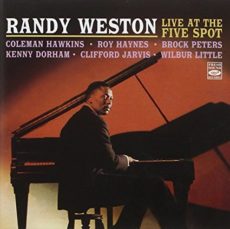
Daily Dose Of Jazz…
Clifford Jarvis was born on August 26, 1941 in Boston, Massachusetts and studied at Berklee College of Music in the 1950s. Moving to New York City, he established himself in jazz between 1959 and 1966 by recording with Chet Baker, Randy Weston, Yusef Lateef, Freddie Hubbard, Barry Harris, Jackie McLean, and Elmo Hope, and playing with Grant Green and Rahsaan Roland Kirk.
From 1962 to 1976 Jarvis performed and recorded with Sun Ra. He also played and recorded with Pharoah Sanders, Sonny Simmons, Alice Coltrane, Kenny Drew, Walter Davis, Archie Shepp and recorded with organist John Patton on the Blue Note album That Certain Feeling in 1968.
By the 1980s Jarvis moved to London, England, where he played with emerging musicians such as Courtney Pine. He worked in music education at Chats Palace Arts Centre in London and was senior drum tutor at Pyramid Arts Development, Dalston, from 1984 to 1994.
Hard bop and free jazz drummer Clifford Jarvis was an educator and performer until his passing on November 26, 1999 in London.
More Posts: drums
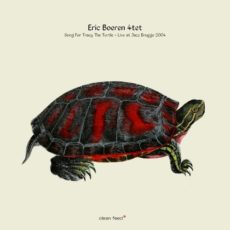
Daily Dose Of Jazz…
Eric Boeren was born in Baarle-Nassau, Netherlands on August 22, 1959 and started out playing euphonium and tuba in the Ulicoten fan fair. He took workshops with Arnold Dooijeweerd in the Bimhuis, from which the Amsterdam Creative Ensemble originated.
In 1983 Eric replaced trumpeter Jimmy Sernesky in the group Available Jelly, for which he also composed. In the Eighties he was part of several groups with Maarten Altena, Kenny Wheeler, Willem van Manen, JC Tans, Sean Bergin, and by the end of the decade joined Ab Baars and Paul Termos.
1990 saw Boeren joining Michiel Braam’s Bik Bent Braam, an association that continues today. In 1993, he founded his first group as a leader, Specs, which was short-lived. During the 1990s he played with Franky Douglas, Martin van Duynhoven, and Guus Janssen.
In 1995 he organized a series of PH31 concerts in Amsterdam with his trio trio comprised of Michael Vatcher and Wilbert de Joode. He enlisted another saxophone to play Ornette Coleman’s early quartet music. He also played Coleman’s music in the Bimhuis with the eleven-member band Go Dutch. He founded the Quartet Boers! That later became the Eric Boeren 4tet. His love for Coleman’s music resulted in two CDs – Cross Breeding and Joy of a Toy.
Boeren went on to play into the new millennium with the band NEWS with Cor Fuhler, bassist Nate McBride and drummer Mike Reed, and the quintet HO & I, that included Douglas and Paul Pallesen. Trumpeter Eric Boeren is one of the initiators of the music collective foundation dOeK (De Exercise de Kunst) and he currently performs, records and tours with his quartet Boerenbond, features Peter Evans, Tobias Delius and Jason Adasiewicz.
More Posts: trumpet
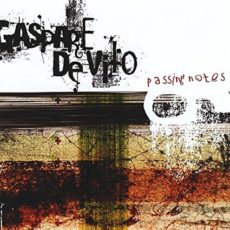
Daily Dose Of Jazz…
Gaspare De Vito was born on August 17, 1978 in Naples, Italy. He studied with Gianluigi Troversi, Eugenio Columbo and musical composition with Giancarlo Schiaffini. An auspicious meeting of Steve Grossman and Greg Osby was fundamental to the freedom of his original music.
Blending his Neopolitan and Meditteranean roots with hip-hop in his early teens, he would go through funk, jazz, Cuban traditional and South African music gave him the basis for his music. He has performed and recorded as a leader and a session player throughout Europe.
He has performed and recorded with Butch Morris, Alvin Curran, Tristan Hosinger, Giancarlo Schiaffini, Eugenio Colombo, Francesco Bearzatti, Fabrizio Puglisi, Vincenzo Vasi, Nicola Guazzaloca, Pasquale Mirra, Marco Dal Pane, Luisa Cottifogli, Maisha Grant and numerous others.
Alto saxophonist, flautist and composer Gaspare De Vito who has been voted Best Italian saxophonist in 2007 and co-founded the Suoniforme record label, continues to record, tour and perform internationally.
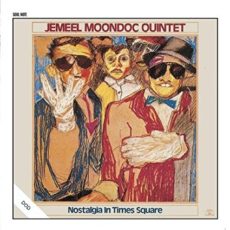
Daily Dose Of Jazz…
Jemeel Moondoc was born August 5, 1951 in Chicago, Illinois and studied clarinet and piano before settling on saxophone at sixteen. He became interested in jazz largely due to Cecil Taylor and at the University of Wisconsin–Madison became one of his student.
Following graduation he moved to New York City, where he founded Ensemble Muntu with William Parker, Roy Campbell, Jr., and Rashid Bakr. The group had its own Muntu record label for a time but eventually faced financial difficulties. He worked with Parker again on his 1998 album New World Pygmies.
Alto saxophonist Jemeel Moondoc, a proponent of a highly improvisational style, has recorded nineteen albums as a leader, two with the Jus Grew Orchestra, three with Denis Charles and Steve Swell and continues to compose, perform and record.
Sponsored By

Voices From The Community
![]()
#preserving genius
More Posts: saxophone
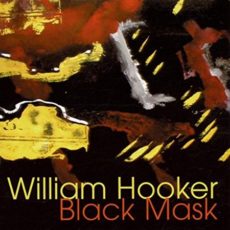
Daily Dose Of Jazz…
William Hooker was born on June 18, 1946 in New Britain, Connecticut. He began his music education singing in the church choir before receiving private drum lessons from the age of 10. He training continued as he played in the Nathan Hale Junior High, New Britain High School and Central Connecticut State College bands.
Starting off playing in rock and roll bands it wasn’t until he was sixteen that he got into jazz, learning standards from an older musician who taught him the essentials of leading a band. During his college years he listened to as many records and live performances as he could, gaining a wealth of knowledge. He also was a member of an organ trio as he matriculated through college and has since performed as a leader of many ensembles in San Francisco, California and New York City, leaning towards avant-garde, improvised and new music.
He has performed or recorded with Billy Bang, Thurston Moore, David Murray, David S. Ware, William Parker, Melvin Gibbs, Donald Miller, DJ Olive, Elliott Sharp, Malachi Thompson, Zeena Parkins, Lee Ranaldo, DJ Spooky, Rob Brown, Roy Campbell, Mark Hennen, Steven Bernstein, Roy Nathanson, Jason Hwang, Dave Soldier, Sabir Mateen, Glenn Spearman, Joseph Celli, Ellen Christi, Liudas Mockūnas, among many others.
Lauded by Downbeat, The Wire and the San Francisco Chronicle as an inspired and fluent drummer who gives long performances of consistent energy and is a kingpin of the free jazz world, drummer and composer William Hooker continues to perform, compose and record.
Sponsored By
www.whatissuitetabu.com
![]()
#preserving genius
More Posts: drums





